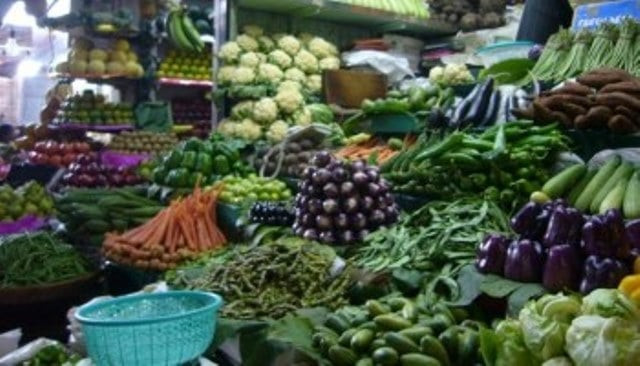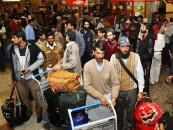Food prices soar in Lahore as floods disrupt supply
Floods in Punjab disrupt food supply to Lahore, leaving markets short on perishables and triggering sharp price hikes

Heavy rains and flooding across Punjab have disrupted the movement of food supplies to Lahore, leaving wholesale markets short of key perishable items and triggering sharp price hikes across poultry, vegetables, and fruits.
Consumers reported that the shortage has not only reduced the availability of fresh produce but also pushed quality down, with many items arriving damaged or in smaller quantities. The absence of active government monitoring and enforcement has further allowed retailers to charge well above the official prices, deepening frustration among buyers already coping with rising costs of living.
Traders at major wholesale markets said truckloads of vegetables and fruits could not reach Lahore due to road closures and damaged routes from flood-affected areas. The reduced inflow has meant fewer choices for wholesalers and retailers, who passed on the cost increases to end consumers.
Read More: Record floods displace millions in Punjab
Poultry was among the hardest-hit categories. Live chicken, officially priced between Rs 397 and Rs 411 per kilogram, was sold to customers at Rs 500 to Rs 530. Chicken meat, which had a fixed rate of Rs 595 per kilogram, fetched between Rs 650 and Rs 750 in retail shops, while boneless chicken was sold for as high as Rs 1,200 against the notified Rs 1,100 ceiling.
Vegetables saw widespread increases as well. Potatoes with soft skin rose by Rs 5 to Rs 85 to Rs 90 per kilogram on the official list but retailed at Rs 150. Lower-grade potatoes were fixed at Rs 55 to Rs 75, yet sold up to Rs 125 to Rs 130. Onions were officially priced between Rs 65 and Rs 70 per kilogram, though most retailers charged Rs 100 to Rs 120. Tomatoes climbed by Rs 20 to reach Rs 110 to Rs 120 but were sold at nearly double, ranging from Rs 180 to Rs 200. Garlic, listed at Rs 205 to Rs 215 per kilogram, was sold at Rs 300, while the Harani variety increased by Rs 5 to Rs 282 to Rs 295 but was retailed at Rs 400. Ginger, fixed between Rs 395 and Rs 465, fetched Rs 600 to Rs 700 in markets.
Other common vegetables, including bitter gourd, brinjal, zucchini, luffa, capsicum, cauliflower, pumpkin, and ladyfinger, also recorded price jumps of Rs 20 to Rs 40 per kilogram above the official notifications. Only spinach and Chinese carrots showed slight reductions, but even these retailed at higher-than-fixed prices.
Fruit markets also reflected a similar imbalance. Apples, bananas, guavas, peaches, and plums remained unchanged on the government list, yet retailers demanded substantially higher rates. Mangoes of different varieties rose by Rs 50 per kilogram, fixed at Rs 210 to Rs 310 but sold between Rs 200 and Rs 450. Grapes of the Sundarkhani variety gained Rs 10, with official rates set at Rs 440 to Rs 460, but were sold at Rs 500 to Rs 600. Dates, officially priced between Rs 470 and Rs 500, fetched anywhere between Rs 900 and Rs 2,000, depending on quality. Persimmons, fixed at Rs 168 to Rs 175 per kilogram, retailed at nearly double, from Rs 300 to Rs 350.
Also Read: Triplets in Gujranwala die at birth as floods block hospital access
Shoppers across the city voiced anger over the unchecked profiteering. Many said authorities had failed to ensure compliance with price lists displayed at markets. “The price control teams are nowhere to be seen,” said one consumer, Ali Ahmad, at Shadman Market. “Every vendor is charging what he wants, and there is no one to stop them.”
Market observers noted that the convergence of natural disruption and weak enforcement has left consumers vulnerable to exploitation. With floodwaters still hindering transport routes and forecasts of more rain, traders expect the supply chain disruptions to persist in the coming weeks.
Economists warn that prolonged shortages of fresh produce could add to broader inflationary pressures already weighing heavily on urban households.




















COMMENTS
Comments are moderated and generally will be posted if they are on-topic and not abusive.
For more information, please see our Comments FAQ